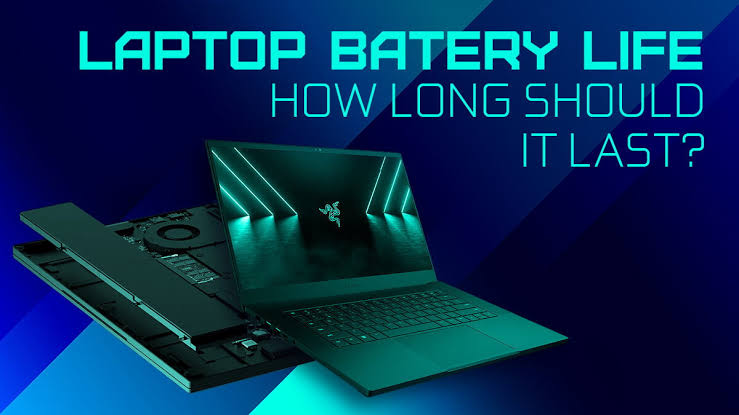Discover the crucial role of battery life and charging technology in laptops. Learn about factors influencing performance, types of batteries, efficient charging solutions, and future trends in mobile computing.
In today's digital age laptops have become indispensable tools for work, education entertainment and communication. They provide users with mobility and versatility in computing. Central to usability and effectiveness of laptops are battery life and charging technology. These factors directly impact productivity, convenience and user experience. Understanding nuances of battery performance and charging capabilities is crucial. This ensures optimized laptop usage and seamless operation in various environments.
Battery Life: A Critical Performance Metric
Battery life refers to duration a laptop can operate on a single charge. It is before needing to be plugged into power source. It is a critical performance metric. It influences user mobility productivity and overall satisfaction with device. Longer battery life allows users to work or engage in activities without interruptions. This is essential during travel, meetings or outdoor settings. Access to power outlets may be limited in these scenarios.
Factors Influencing Battery Life
Several factors influence laptop battery life, including:
- Battery Capacity: The capacity of the battery, measured in watt-hours (Wh), determines how much energy it can store. Higher capacity batteries typically offer longer runtime on a single charge.
- Processor Efficiency: The efficiency of the laptop's processor (CPU) impacts power consumption. Modern processors are designed to balance performance with energy efficiency to extend battery life.
- Display Technology: The type of display (e.g., LCD, OLED) and screen brightness settings affect power consumption. Lowering screen brightness and opting for energy-efficient display technologies can prolong battery runtime.
- Software Optimization: Operating system and software applications running on the laptop can impact battery life. Optimizing settings, closing unnecessary programs, and using power-saving modes can conserve battery power.
- Usage Patterns: User behavior, such as multitasking, streaming multimedia content, or gaming, affects battery drain. Heavy usage of CPU and GPU-intensive tasks consumes more power and reduces battery life.
Types of Laptop Batteries
Laptops typically use one of the following battery types:
- Lithium-Ion (Li-ion): Most modern laptops utilize Li-ion batteries due to their high energy density, lightweight, and ability to hold a charge over extended periods. Li-ion batteries are rechargeable and offer a good balance between performance and longevity.
- Lithium-Polymer (Li-Po): Li-Po batteries are similar to Li-ion batteries but offer slightly different form factors and may provide better energy density in certain applications.
- Nickel-Metal Hydride (NiMH): Less common in modern laptops, NiMH batteries are rechargeable and offer a lower energy density compared to Li-ion batteries.
Charging Technology and Efficiency
Efficient charging technology is essential for minimizing downtime and maximizing productivity when using laptops. Key aspects of charging technology include:
- Fast Charging: Rapid charging technologies enable laptops to recharge quickly, reducing wait times and enhancing user convenience. Fast charging protocols vary by manufacturer and may require compatible chargers and devices.
- USB-C Power Delivery (PD): USB-C PD is a versatile charging standard that allows laptops to charge via USB-C ports. It supports higher power outputs, enabling faster charging and compatibility with a wide range of devices.
- Battery Management Software: Manufacturers often provide battery management software that monitors charging cycles, optimizes charging rates, and provides insights into battery health. These tools help prolong battery lifespan and maintain optimal performance.
- Heat Management: Efficient heat dissipation during charging is critical for battery longevity and safety. Cooling mechanisms, such as heat sinks and fans, prevent overheating during intensive charging sessions.
Impact on User Experience and Productivity
Battery life and charging technology directly impact user experience and productivity in several ways:
- Work Flexibility: Longer battery life allows users to work remotely or on the go without being tethered to power outlets, enhancing flexibility and mobility.
- Uninterrupted Workflows: Reliable charging technology ensures uninterrupted workflows by minimizing downtime for recharging, especially during critical tasks or meetings.
- Travel and Commuting: Extended battery life is advantageous for travelers and commuters who rely on laptops for work or entertainment during journeys.
- Gaming and Multimedia: High-performance laptops used for gaming or multimedia editing benefit from robust battery life and efficient charging to sustain intensive usage.
Challenges and Considerations
Despite advancements in battery and charging technology, challenges and considerations include:
- Battery Degradation: Over time, all batteries degrade with use, resulting in reduced capacity and shorter runtime per charge. Proper battery maintenance and usage habits can mitigate degradation.
- Compatibility Issues: Compatibility between chargers, cables, and devices can impact charging efficiency and performance. Using manufacturer-recommended accessories ensures compatibility and safety.
- Environmental Impact: Responsible disposal and recycling of old laptop batteries are crucial to minimize environmental impact and promote sustainability.
Future Trends in Battery Technology
Future trends in laptop battery technology focus on enhancing energy density, improving charging efficiency, and integrating sustainable materials. Innovations such as solid-state batteries, graphene-based electrodes, and AI-driven power management systems promise to revolutionize battery performance and longevity.
Conclusion
Battery life and charging technology are integral components of laptop usability, impacting productivity, mobility, and user satisfaction. Understanding the factors influencing battery life, selecting appropriate charging solutions, and adopting best practices for battery management are essential for optimizing laptop performance and ensuring seamless operation in diverse environments. As technology continues to evolve, advancements in battery technology and charging standards will play a pivotal role in shaping the future of mobile computing, offering enhanced efficiency, sustainability, and user-centric experiences.
